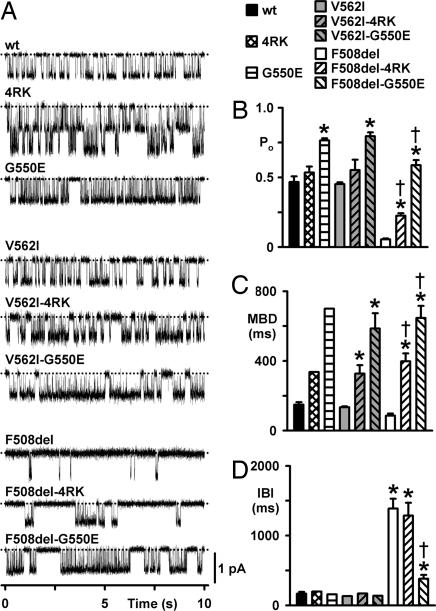Fig. 4.
Single-channel activity of wt-, V562I-, and F508del-CFTR alone and in cis with 4RK and G550E. (A) Representative single-channel recordings of the indicated mutants in excised inside-out membrane patches (see Methods). Dotted lines indicate the closed channel state, and downward deflections correspond to channel openings. (B–D) Po (B), MBD (C), and IBI (D) of the indicated CFTR variants. Columns and error bars are means ± SEM (wt: n = 6 for all data; 4RK: Po, n = 2; MBD and IBI, n = 1; G550E: Po, n = 3; MBD and IBI, n = 1; V562I: Po, n = 5; MBD and IBI, n = 2; V562I-4RK: Po, n = 4; MBD and IBI, n = 3; V562I-G550E: Po, n = 8; MBD and IBI, n = 3; F508del: n = 10 for all data; F508del-4RK: Po, n = 13; MBD and IBI, n = 10; F508del-G550E: Po, n = 5; MBD and IBI, n = 4). Asterisks indicate values that are significantly different from that of wt-CFTR (P < 0.001); daggers indicate values significantly different from F508del-CFTR (P < 0.001). For wt- and F508del-CFTR, C127 cells expressing these variants were used to determine values of Po, MBD, and IBI, but the single-channel traces shown in A are all from BHK cells expressing the indicated variants. In two single-channel patches from BHK cells expressing wt- and F508del-CFTR values of i and Po did not differ from those of C127 cells expressing these variants (data not shown).

